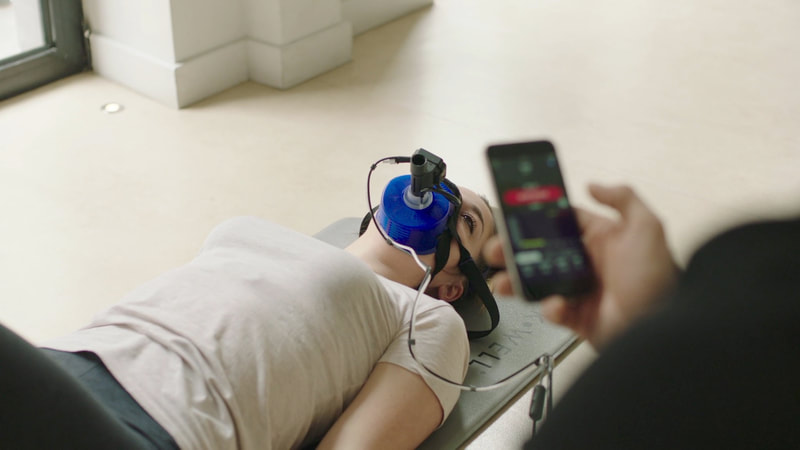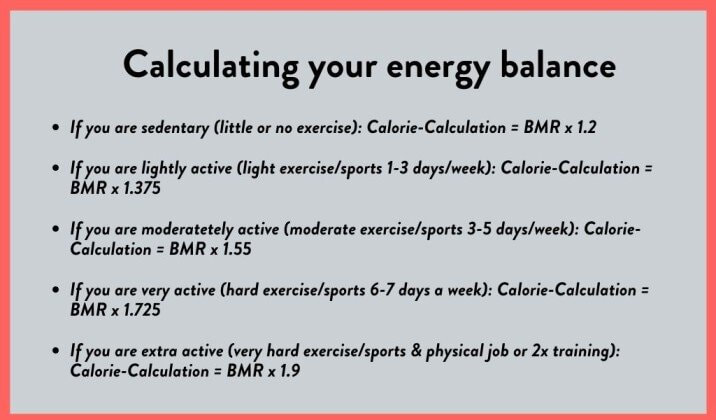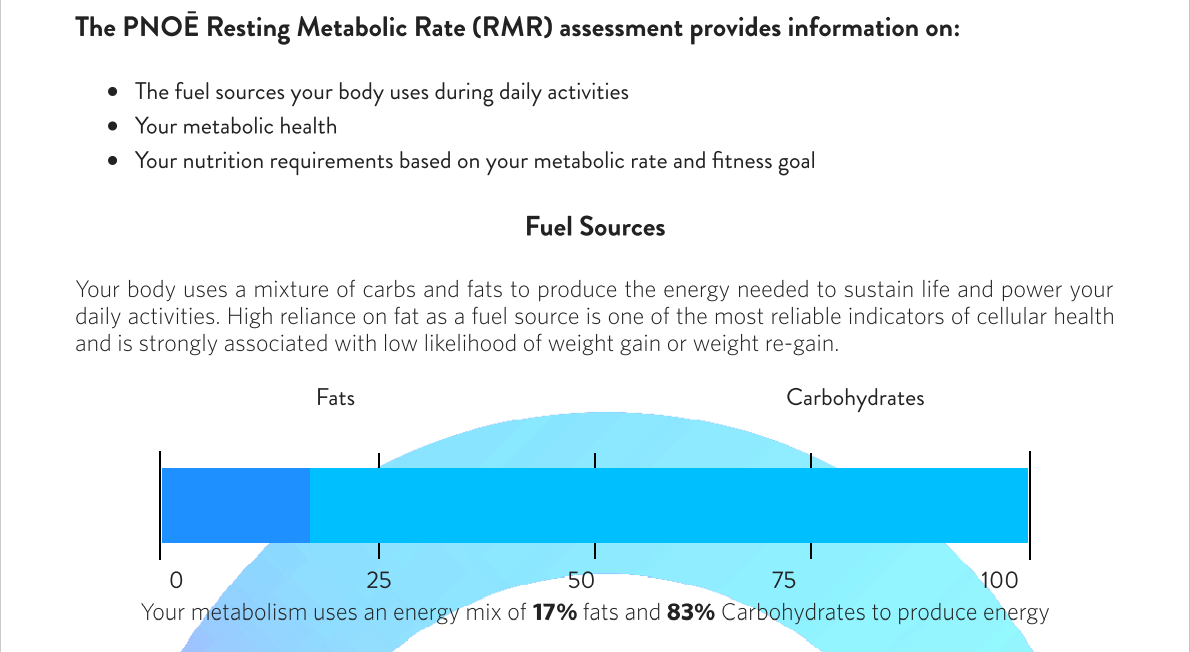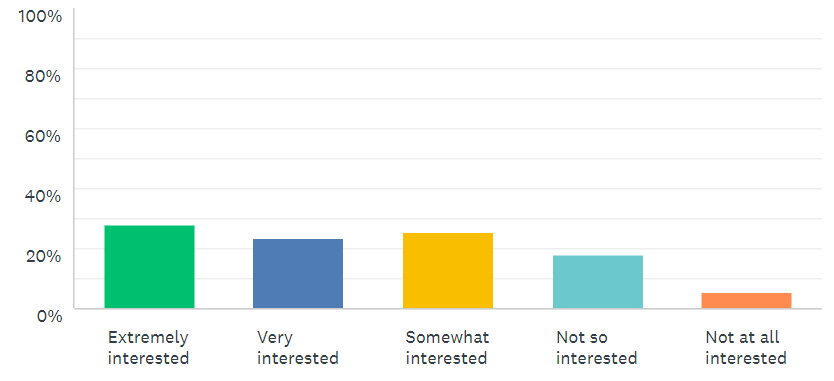Part 4 : Weight loss when trainingSo, let’s start this blog by taking a trip back to the survey that went out to over 90 triathletes who have signed up for the Cork Ironman festival this year. I asked “Is weight loss part of your Ironman training in 2021”? Out of the 91 respondents, 43% said yes and 57% said no. I then asked this exact question: Did you know that the PNOE gas analysis unit can determine your resting metabolic rate? This is a key number of calories required to maintain weight and so will inform how to achieve healthy weight loss. The RMR test will also tell what your preferred fuel source is at rest, and the goal for weight loss and endurance athletes is to move the preferred fuel source towards fat in a ratio of 70:30; fat : carb. The answer was a resounding No! 87% of the respondents did not know this service existed and may not have known about the objective of shifting the predominant fuel source at rest towards fat in order to successfully achieve and maintain weight loss and perform well in endurance events. We have already discussed the benefits of low-end metabolic efficiency (burning fats effectively at low to moderate exercise intensity) in the 2nd blog, so I’ll leave a link to that here. The purpose of this blog is to identify the pitfalls that can occur when attempting to lose weight whilst training, or just attempting to lose weight in general. Basal or resting metabolic rate. This is simply the amount of calories you burn when at rest, or doing nothing. The major organs in the body such as the brain, heart, liver and kidneys use up about half of the resting energy while fat, your digestive system and your muscles account for the rest. For this reason, it can fluctuate, not only due to increasing and decreasing muscle, it can even be influenced by e.g., hormones during the menstrual cycle. Age is another factor that will reduce our resting metabolic rate, even if we do our best to maintain lean muscle mass. Genetics play a role too, the research however is still not clear on this. One thing that is clear is that your basal metabolic rate accounts for 60-80% of total energy expenditure for the day. This is an important statement for those of us who are training and maybe believe that physical exercise is the biggest energy cost in their day. This could of course be true if said person ran a marathon or cycled a stage of the tour. However, when the bout of exercise is within your standard training volume, then be aware that you don’t then over-consume calories. And please don’t rely on watches that tell us we have burned 3000 calories after an easy cycle!! A key factor here is how can we increase our basal metabolic rate in order to better manage our body weight.
Crash diets will significantly slow our metabolism/reduce our resting metabolic rate because the weight loss happens too quickly. Naturally the body’s resting metabolic rate will reduce when we achieve weight loss because of the probable loss in muscle but also because the organs and muscles do not need to work as hard to move a lighter body. With slow gradual weight loss the metabolic rate drops slightly but doesn’t plummet. How do we find out our resting metabolic rate? There are a number of equations and formulas out there that use your height, weight and age to calculate your RMR. However, there is large room for error here as they do not account for muscle metabolism and oxygen consumption simply because they are not measured. Gas analysis is the way to measure these metrics and this technology has advanced in recent years. The PNOE portable gas analysis device is the system I am using at the clinic and I am finding it a revelation for my nutrition service and also for helping people train appropriately for their goals. It allows me to see what is going on at a physiological level with the person in front of me. Using the data from their resting metabolic rate test and their active fitness test, we can figure out why they are not making progress and hitting targets. Since we covered the gas analysis fitness test in the 2nd blog, I want to tell you more about the RMR test and also take you through a breakdown of my own report using a video blog. Before we do that, can I just bring your attention to the chart below and to a client case study. This chart is a nice way of working out your calorie requirements once you know your resting metabolic rate. Refer back to this chart after watching the video blog to get a full understanding around this very topic. Have a look at this screen shot below from a previous client’s resting metabolic rate report. It shows the fuel usage ratio at rest. This client was tested back at the end of December when he decided he wanted to train and eat appropriately for the following 9 months in preparation for the full Ironman triathlon in August. Let’s call him Mr. IM. He was quick to tell me that his training was mostly made up of trying to run 5k as fast as he could. He also wanted to lose weight during his structured training plan. We tested his RMR and then he was onto the bike for a VO2Max ramp test protocol to look at how his physiology behaves at low, moderate and high-end intensities. The RMR test showed a large shift towards carbs as a fuel source (83% carb : 17% fat) when at rest and the same trend happened during his fitness test when we looked at the data afterwards. And to complete the picture, here is the discussion of the data following Mr. IM’s gas analysis fitness test. This screen recording is very interesting in that it completes the physiological story belonging to Mr. IM which ties in with his RMR report. In it we discuss:
Here is the aforementioned video blog on my own RMR report evaluation. In it we discuss:
Falling prey to the post low-moderate exercise binge. This is a really interesting area and I’m sure has significant psychological connotations wrapped up with the physiological ones! Ok, so we do a hard session on the bike for instance, it was 2.5 hours in length and contained a lot of hills where the group pushed hard and the overall effort levels were in the 6-7/10 range on the scale of perceived exertion. (See blog number three for more info around this, training load management and running gait analysis). This type of training session will need a proper recovery as far as nutrition is concerned. This means consuming a meal with carbs and proteins to replace muscle glycogen and build muscle, respectively. We know now after reading the 2nd blog that carbohydrate is required when training at this intensity, so it should be no surprise that a ratio of 3:1 carb:protein is recommended after such an intense session. You should aim to get at least 35g of protein in this meal. An attack on the kitchen shelf is ok here, and a binge is called for, provided it contains the proteins. Now, if we change it up a little and give the example of the 45year old experienced cyclist who wants to lose weight and has just completed a Sunday cycle with her two friends, which was 2 hours in length but conversation was always possible and there was a lot of it! Hills were scarce and the few hills that did feature were taken very conservatively and gently. This cyclist needs to be very careful when she comes in the door and walks towards the kitchen. She is in a very different physiological state compared to the example above. She may feel she has earned the right to eat everything in sight and psychologically this may make sense, but it doesn’t make physiological sense! This is because her body will not be craving recovery nutrition and so her usual daily diet will suffice. Her usual daily diet should provide sufficient calories to look after her RMR and her activities of daily living, while the calories burned during the two-hour cycle will support her weight loss goals. Eating during exercise, or not. The same applies for the male/female cyclist out for an easy spin. Pack appropriately here. Putting a gel in your back pocket is fine, but it should only be used in an emergency. It would be more appropriate to bring a complex carbohydrate here like an apple or even a peanut butter rice cake. When cycling at an easy intensity, the body should be using a mix of carbs and fats, but significantly more fats will be utilised over carbs if the cyclist is metabolically efficient at low intensity. In this instance, the cyclist will not require much, if any fuel for a 60-90min cycle. If on the other hand the cyclist is not metabolically efficient and is burning more carbs than fats, they should try to not feed this poor ratio by eating simple sugars on such a low intensity ride. This can happen very easily with a stop at a café for a scone or snacking on a Nutrigrain or Nature Valley bar. This is not helping their weight loss if that happens to be a goal and certainly not helping to improve their muscle metabolic efficiency (fat burning efficiency). For this category of cyclist/triathlete/runner/person, a good idea would be to do the same easy spin/jog but in a fasted state. First thing in the morning after a black coffee is a nice way to do this. The key factor here is that the exercise session needs to be low intensity and can be perhaps 45-60mins to start with before gradually extending the time. Very slight increases to the intensity can be added but would need to be done so slowly over an extended period of time so that you remain in a fat burning state. By training in a fasted state, you are encouraging your body to use fat stores to provide the energy for the session. But remember, the main indicator for fuel usage by the body is exercise intensity. It is vital that you stay in zone 2 for these sessions in order for them to be effective. And it is equally important that you know what zone 2 is for you, which brings us back to blog 2 and the importance of gas analysis testing. On the topic of fasting, there is very clear evidence coming through on how beneficial it is for everybody to allow their body to be in a fasted state for at least 12hours. The friendliest way of doing this is to stop eating at 7:30pm (brush your teeth to put a cap on your consumption) and then break your fast with breakfast at 7:30am. Clearly a very difficult challenge for someone working night shifts. On that matter, science does show that people working late shifts for long periods of time have higher rates of cardiovascular disease, obesity and cancer. There have been well documented studies in mice where one group of mice are allowed to eat ad lib while the other group are given the same number of calories but only allowed to eat them within a certain time window (8-12hours). Time was restricted here while the calories were not restricted, as both mice groups were given a high fat and sugar diet in the study. The mice that ate during the 8-12 hour window did not become obese, had normal liver function, normal cholesterol and showed better muscle mass and lower fat mass. The other group gained weight (30% increase in body weight) and showed higher cholesterol, fat and sub optimal liver function. When they tested the same model with healthier food, similar findings were reported. The time constrained eating group were certainly healthier compared to the time constrained group on the high fat and sugar diet, but they both shared a commonality in that they maintained their body weight and did not increase in fat mass. This whole area is called circadian nutrition, or simply eating during our active hours only. Interestingly, improved endurance ability was found in the mice that had an 8-9 hour eating window (that is a 15-16 hour fast in 24hour period) but not with the mice that had a 10-12 hour eating window, although both of these groups maintained body weight and shared in the healthy spoils of time restrained eating. To reiterate, both of these groups did not gain weight compared to the weight gain seen in the mice who were allowed to eat whenever they wanted. They found increased mitochondrial volume in the liver but also in the brown fat tissue with the 8-9 hour restricted eating group. You should know after reading the 2nd blog about the importance of mitochondria in endurance training. Ketone bodies are being produced after 8-10hours of fasting and the link between using ketone bodies as fuel source and their benefit to endurance activity is becoming stronger and stronger. It is not within the boundaries of this blog to go down that road at this point in time. Fasting physiology is however still a new science and so more research is needed. One very recent and fascinating finding around why insulin sensitivity is very different between day and night is around the role that melatonin has with the beta cells of the pancreas, where insulin is made! Melatonin is made in the brain and in the gut and it can actually inhibit insulin secretion. Wait for this, for all you romantics out there, having an evening meal with just a candle lighting between you two may not be a good idea! You have less light which means more melatonin. That is why calories consumed late at night can have a different effect on the body compared to the same calories consumed earlier in the day. On a similar note, in a weight loss trial in Spain, one group achieved significant weight loss while the other group had only moderate weight loss. The only difference was that the group who lost more body weight had their lunch earlier in the day compared to the usual later time of 3 or 4pm in Spain. What is important to add in here is that your eating window starts as soon as you take the first sip of that precious black coffee. The superbly named Satchidananda Panda is the leading researcher in time restricted feeding. He is a professor at the Salk Institute in California and author of The Circadian Code. To refer back to the survey before we call it a day. The question was asked if an RMR test using the PNOE metabolic gas analysis device combined with a nutritional consultation to facilitate weight loss would be of interest? The response bodes well for this service in the near future. If you fall into one of the interested categories, you can read up more about the service here where I also mention the PNOE A1 Nutrition plan that syncs nicely with your RMR result in designing a food plan using the precise calorie requirements to achieve weight loss and maintain it with RMR retests to keep an eye on metabolism and your fuel source ratio. I'll finish up there, feeling a bit peckish! Many many thanks for tuning in to the blog series. I sincerely hope you are getting something from it and please let me know if you happen to have any questions, big or small. John Phelan MSc Physio, BSc Nutrition www.thebikefitphysio.com www.lifefitphysio.ie
11 Comments
|
John
|
|
|






 RSS Feed
RSS Feed